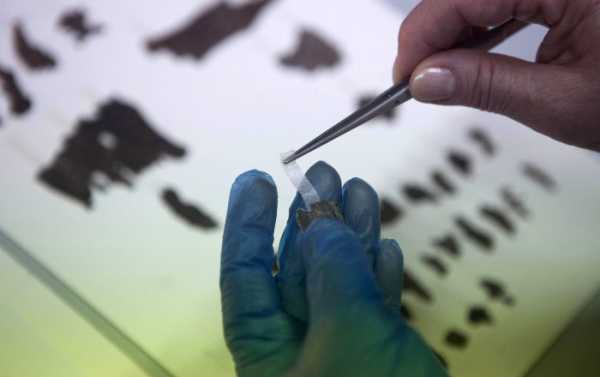
The scrolls are considered one of the most important archaeological discoveries ever made. The 25,000 fragments contain copies of certain books from the Hebrew Bible as well as astronomical texts, calendars, community rules, and even the whereabouts of hidden treasure. The main problem is that they are disintegrated…
A team of scientists from Tel Aviv University says that DNA testing could provide an answer to a decades-old mystery of the Dead Sea Scrolls that archaeologists have been desperately trying to solve. Ever since the texts were found in the middle of the 20th century, researchers have been trying to connect the pieces in the same way that one assembles a puzzle in order to be able to read the full text. This is an extremely laborious task, not only because scientists have to go through all 25,000 pieces, but also because mistakenly connecting two fragments could drastically alter the interpretation of the text.
Since most of the texts were written on animal skin, the new study proposes piecing them together by using the DNA from the skin. “We hypothesised that if skins from diverse types of animals were used for the preparation of different scrolls, then species identification could allow primary sorting of related fragments”, said Professor Ohed Rechavi of Tel Aviv University and the lead author of the study, which was conducted over more than seven years. The findings of the research were published on 2 June in the journal Cell.

A fragment from the Dead Sea Scrolls that underwent genetic sampling to shed light on the 2,000-year-old biblical trove is shown to Reuters at the Israel Antiquities Authority (IAA) laboratory in Jerusalem June 2, 2020
The researchers were able to extract genetic material from 26 scroll fragments. They say that most of the Dead Sea Scrolls were written on sheep skin, although some were made of goat and cow skin. The latter detail surprised the researchers, as the Judean desert, where some of the scrolls were found, is not the best place to raise cattle. The scientists say that the scrolls made of cowhide may have come from somewhere else.
“We can’t tell exactly where the foreign scrolls originated, but we can tell, owing to the DNA analyses, that it was somewhere outside the Judean desert”, said Professor Rechavi.
Thanks to DNA testing, the scientists were able to identify a mistake that had been made earlier. One scroll containing text from the Book of Jeremiah, which the scientists thought was part of a single manuscript, actually turned out to be part of another that also contained text from the same prophetic book.
“Analysis of the text found on these Jeremiah pieces suggests that they not only belong to different scrolls, they also represent different versions of the prophetic book”, Professor Noam Mizrahi, co-author of the study, told National Geographic. “The fact that the scrolls that are most divergent textually are also made of a different animal species is indicative that they originate at a different provenance”.
The researchers say that different versions of the same book mean that ancient Jewish texts were subject to reinterpretation and revision.
Sourse: sputniknews.com






